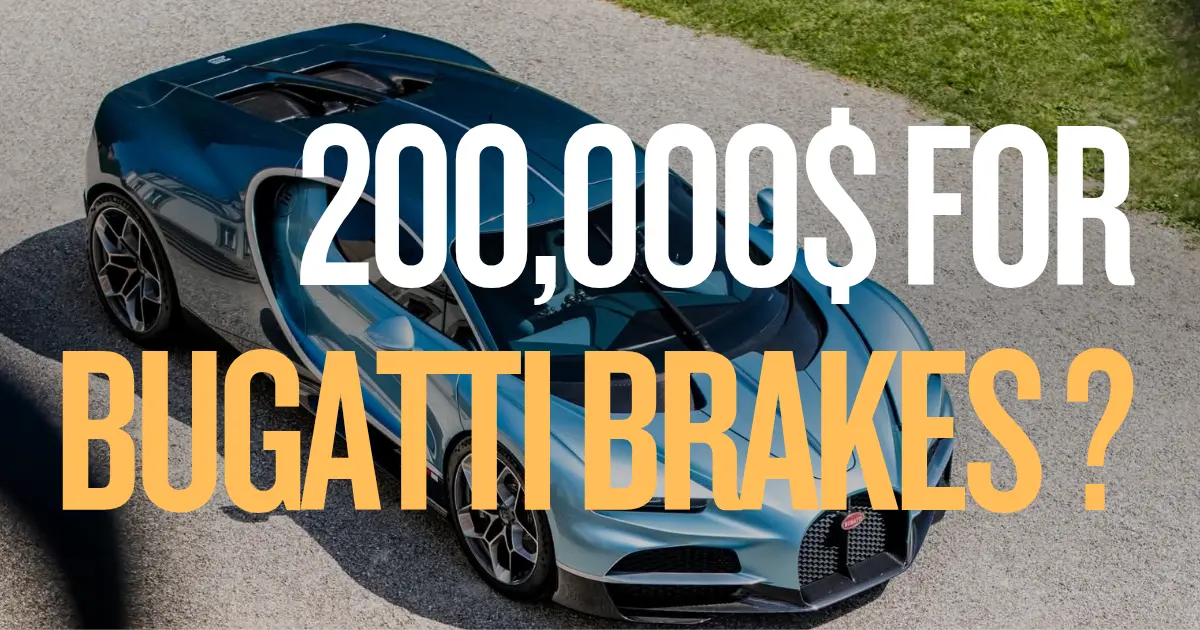The $200,000 Brakes: Why Bugatti’s Carbon-Ceramic System is a Masterpiece of Engineering

When it comes to hypercars, Bugatti has always led the way in pushing the boundaries of performance, luxury, and engineering. Yet, even in this realm of extreme innovation, one detail stands out: the $200,000 price tag for the carbon-ceramic brake system on the Bugatti Chiron. That’s more than the cost of a high-end Porsche 911. What makes these brakes so special? Let’s explore the cutting-edge technology, craftsmanship, and physics-defying capabilities that justify their staggering cost.
Stopping a 1,500-HP Missile
The Chiron isn’t just a car—it’s a 1,500-horsepower beast capable of reaching 261 mph (420 km/h). Bringing this engineering marvel to a halt requires brakes that can withstand extreme forces:
- Deceleration Power: Slowing down from top speed means dissipating energy comparable to a Boeing 737 at takeoff.
- Heat Resistance: The brake discs can reach 1,800°F (1,000°C)—hot enough to liquefy aluminum.
- Durability: Traditional steel brakes would warp or disintegrate under such intense stress.
To meet these demands, Bugatti employs carbon-ceramic brakes (CCBs)—technology derived from Formula 1 and aerospace engineering.
Why Carbon-Ceramic? The Science Behind the Stopping Power
Bugatti’s CCBs are an engineering marvel, blending lightweight materials and extreme heat resistance:
-
Carbon Fiber Reinforced Silicon Carbide (C/SiC) Discs
- Made from woven carbon fiber, then infused with silicon at 3,000°F to form a ceramic matrix.
- Lighter than steel, corrosion-resistant, and impervious to extreme temperatures.
-
Titanium Brake Calipers
- 8-piston calipers apply up to 2,200 pounds of clamping force to the discs.
- Special ceramic brake pads maintain peak performance even after repeated high-speed braking.
But materials alone don’t justify the price—it's the precision and development that make them extraordinary.
Breaking Down the $200,000 Cost
-
Research & Development
- Years of testing went into perfecting these brakes, including 2,000+ simulated high-speed stops.
-
Handcrafted Engineering
- Each brake disc is handmade in Germany by Brembo’s elite specialists, taking weeks to manufacture.
-
Performance Validation
- Every set undergoes rigorous testing at Bugatti’s Ehra-Lessien track, proving their ability to stop a Chiron from 250+ mph repeatedly.
-
Exclusivity & Low Production
- With only 500 Chirons produced, ultra-low-volume manufacturing drives costs even higher.
Are They Worth It? The Performance Speaks for Itself
- Braking Distance: The Chiron stops from 62 mph to 0 in just 104 feet—shorter than a tennis court. At 250 mph, it stops in under 10 seconds.
- Longevity: Carbon-ceramic brakes last 10 times longer than steel brakes under extreme conditions.
- Weight Advantage: Being 40% lighter than steel, they improve handling and acceleration.
For Bugatti owners, these brakes are more than just a necessity—they represent engineering perfection and exclusivity.
Bugatti’s Legacy of Pushing Limits
Bugatti has a history of extreme braking technology. The Veyron’s ceramic brakes cost $150,000 in 2005 (~$240,000 today). With the upcoming Tourbillon expected to surpass 277 mph, future braking systems will be even more advanced—and expensive.
Final Thoughts: Engineering Without Limits
Spending $200,000 on brakes might seem excessive, but for Bugatti, it’s essential. In the hypercar world, every component must perform at the absolute peak—even the ones designed to slow you down. As Bugatti’s former CEO famously said:
“We don’t build cars. We build legends.”
And legends, as we know, don’t come cheap.